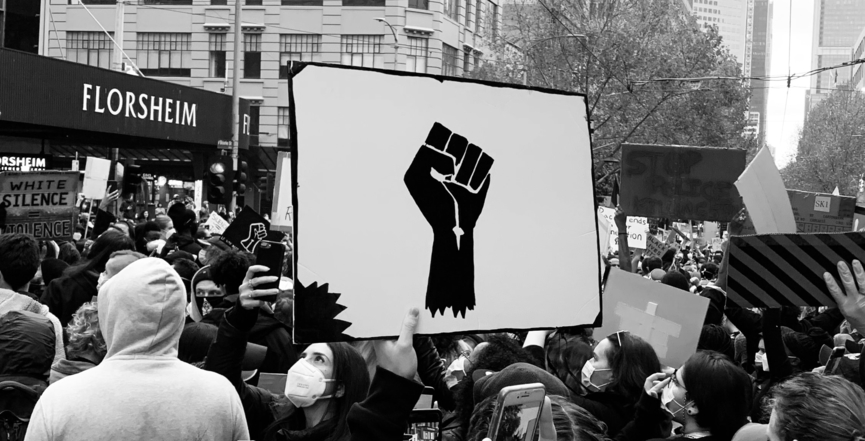Last August, a downtown Toronto mosque reported it was vandalised for the sixth time in three months. In Nova Scotia, a mob of 200 men prevented Sipekne’katik fishermen from leaving a lobster storage facility, hurling rocks and racist insults, making false accusations and destroying property. This is just one incident in a series of violent attacks after the Sipekne’katik launched a “modest livelihood” fishery in September.
After many incidents, we find that people engaging in hate crimes are often part of right-wing online organizing.
A report released in 2020 by the Institute for Strategic Dialogue, titled “An Online Environmental Scan of Right-wing Extremism in Canada,” “identified 6,660 right-wing extremist channels, pages, groups and accounts in Canada.”
The Globe and Mail reported: “The Canadian activity reaches an audience of millions of people, it said, and includes a network of 6,352 Twitter accounts, 130 public Facebook pages and groups, and 32 YouTube channels.”
This is just a sample of the home-grown networks of hate-mongers in Canada. News reports and studies point to a relationship between fake news, social media “echo chambers,” online “bot armies,” and real-life outcomes.
In Canada, reported hate crime has been generally increasing since 2014, peaking in 2017 at 2,073 reported hate crimes. All this goes to show that we must step up online efforts to combat hate and fake news-based organizing on social media or face real consequences in our communities. It is not enough to respond with outrage after a racist incident — we must work to shut down this organizing.
1. Report the hate and misinformation you see online. Social media platforms have been slow to react and generally have gotten it wrong when it comes to regulating the use of their platforms to spread misinformation and hate.
However, if you can get them to act, you may make a big impact. The Poynter Institute has compiled a database summarizing what governments around the world are doing to take on misinformation campaigns. For individuals, here is a partial list of ways to report online hate compiled by the Canadian Anti-racism Network.
New Why has put together a guide to make sure your online content is not appearing on right-wing websites. The New Why guide also includes a list of popular right-wing sites in the United States which originate much of the hate and misinformation.
2) Stand up to the racists when they rally and organize. Many of the right-wing organizers who come out often provoke and intimidate, and want to grab headlines by causing violence. The peaceful protesters seldom get covered. So, if there are allegations of violence at a protest, get your story out to allies like the ARC Collective.
3) Engage people you know who are posting right-wing memes but don’t feed the trolls. The right-wing has weaponized online discussions by organizing to disrupt discussions, curate outrage and radicalize users. In April 2019, The Globe and Mail published an analysis of 150,000 messages in a right-wing chatroom which showed, among other disturbing things, that this is a deliberate strategy being used by the Canadian right-wing. When you are engaging the people you know and in your feed
- Develop a strategy for what you want to communicate. These can be five posts from your Facebook feed, or can be more sophisticated like an online campaign you are pushing.
- Search for current news stories, social media groups, and other online spaces — both in your bubble and outside of it — and start using information to engage people strategically. Strategically means starting a discussion instead of just posting facts. It also means taking the time to read others’ comments and supporting those you agree with. Start new threads and make sure that you are not adding to a thread or responding to a comment by a troll. Being deliberate allows users to engage people outside of their bubbles.
- If you want to convert people, engage the conservatives you know. I have some family members with whom I am in consistent conversation. I am respectful and factual and I consistently comment on their posts. Visiting their social media pages also helps me understand what messages resonate on the right. Bringing it close to home may become uncomfortable, but this blog provides information that may help to guide those difficult conversations. The important thing is not to let anything which is harmful and racist pass. This is part of being an ally: organizing your community. If you want further assistance Tactical Tech has developed a brilliant information activism guide, profiled in rabble’s activist toolkit.
In a recent article in the Socialist Worker, Sid Lacombe quoted British socialist Tony Cliff: “Our policy of fighting fascism was two-track: attacking the rats and attacking the sewers in which the rats multiply.”
We must also fight the roots of this hate and engage in civic organizing, deepening our commitment on the ground. Here is an attempt at a comprenhensive list of organizations fighting hate and racism in Canada. There are so many more. Organize online to undermine the online spaces being used to spread hate and disinformation, but if you want to make real change, work on the ground.
Image: Kon Karampelas/Unsplash




